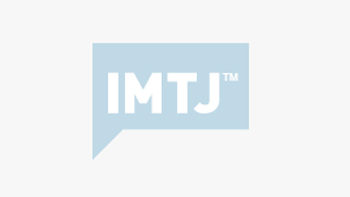Best known for medical tourism, Thailand is now promoting all types of health and wellness tourism. Tourism Authority of Thailand (TAT) has a new marketing strategy for 2014. Having recently conducted a survey on tourism, TAT says that health and wellness will become a niche market to receive special focus in its marketing efforts during the next few years.
Best known for medical tourism, Thailand is now promoting all types of health and wellness tourism. Tourism Authority of Thailand (TAT) has a new marketing strategy for 2014. Having recently conducted a survey on tourism, TAT says that health and wellness will become a niche market to receive special focus in its marketing efforts during the next few years.
Pongsathorn Kessasamli of TAT explains, “Future marketing will concentrate on certain niche markets, which is a significant change in focus for Thailand’s tourism industry. The country had 22 million visitors in 2012, and there are 24 million visitors projected for 2013. Consequently, it is not necessary to simply encourage more tourism; instead, efforts will be directed to promoting the popular attractions that Thailand has to offer.”
TAT has joined with Thai Airways International, Asia Web Direct, and more than 30 leading providers of health, beauty, and spa treatments to launch a digital marketing initiative promoting the country’s thriving health and wellness industry. The campaign takes aim at women in the Asia-Pacific market, including Thailand, who are looking for ways to rediscover themselves. The offer is for a wide selection of exclusive deals on wellness and beauty treatments, spa packages, and hotel stays in Thailand.
The ‘Find Your Fabulous’ digital marketing campaign promotes the health and beauty segment of Thailand’s tourism industry. Over 30 leading providers of wellness-related services including clinics, spas, and health centres have signed up to offer over 150 packages of exclusive health, beauty, and hotel deals that allow tourists from all over the world to book online and receive special pricing.
There have been many claims on the number of medical tourists, with figures based on hospital numbers. Problems with these figures include over–inflation due to counting hospital visits not unique patients, inclusion of people buying medicines, and the inclusion of expatriates and business and vacation travelers who fall ill. Various attempts to improve figures have failed as hospitals have a marketing incentive to over claim, Last year the Department of Health broke down the figures and showed that only 26% of the claimed numbers were actually medical tourists; the rest were foreign residents, business travelers and holidaymakers.
So TAT has approached the problem from a totally new direction. To reach a solid understanding of what encourages tourists to visit this country, TAT carried out a study based on 30,000 interviews and questionnaires for a period of one year between April 2012 and March 2013. The study showed that health and wellness tourism generated 858,340 trips to Thailand and produced estimated earnings of 31.12 billion Baht for the Thai economy. These figures include medical tourists, health tourists, wellness tourists and spa tourists. The figures are not broken down by type, but as Thailand is the spa capital of Asia, many will be spa and wellness travellers rather than medical tourists.
Thailand has invested heavily in its health-care services to meet the rising demand for accredited medical care with modern, first-class facilities. Thailand has also done much to develop and improve its spa services. The spa industry’s desire to achieve and maintain high standards amongst spa professionals has led to the creation of the Thai Spa Association. This not-for-profit organisation seeks to promote the industry and to establish high standards in staff training, spa management, and the production and supply of equipment. These standards have had a positive impact on the development of the industry and its reputation for excellent customer service.
There are two common approaches to link hotels and spa/wellness offerings. One is to combine the two in wellness hotels; the other to is to link existing spas with existing hotels and other accommodation. Krabi Riviera is a leading provider of luxury holiday villas in Southern Thailand, and people wishing to stay in one of Krabi Riviera’s luxurious villas can also enjoy a range of spa services. Guests can choose from a wide selection of spa providers in the nearby town of Ao Nang, together with having the option of using Krabi Riviera’s own in villa massage programmes.
The spa/wellness sector is targeting four groups that have been shown to spend more money than average, and to be increasing in numbers: higher-end travelers from Russia, China, Germany and India. A huge increase in the number of tourists from China, Russia and India in the first quarter 2013 has benefited spas, says the Thai Federation of Thai Spa (TFTS). The main destinations are Bangkok and resort destinations such as Chiang Mai, Phuket, and Pattaya. Potential is seen in promoting Thailand to South Koreans and to older Japanese travellers.
Stenden Rangsit University is undertaking customer research for the Thai Spa Association and TAT. The spa research includes both an extensive investigation of spa consumers as well as spa operators. The main goal of the research is to respond to a lack of quality academic research that currently exists in the spa industry and deliver research results in the form of specific industry recommendations. The overall objective of the spa consumer research is to have a better understanding of consumer behaviour and perception, including current trends of treatments and therapies, buying behavior and the decision making process.








 ©2024 All rights reserved LaingBuisson
©2024 All rights reserved LaingBuisson 


